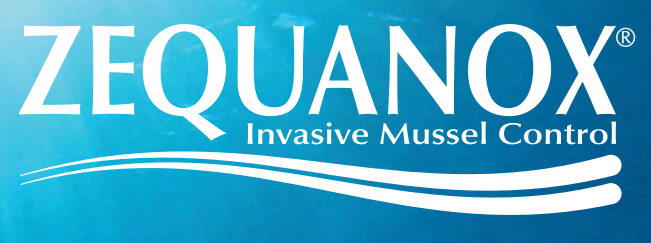Lake Saver’s Whole-Lake™ Solution
to Invasive Mussels
Zequanox™ and Lake Bottom Aeration
Scientists at the New York State Museum (NYSM) discovered a naturally occurring strain of Pseudomonas fluorescens bacteria that selectively kills large numbers of invasive mussels without degrading water quality or killing other aquatic organisms.
The bacteria work by creating compounds which destroy the mussel’s digestive system. In 2007, Marrone Bio Innovations Inc. entered into a commercial partnership with the NYSM to bring this naturally occurring soil micro-organism to market. The result is Zequanox™ – an effective, safe and environmentally friendly musselcide.
 http://marronebioinnovations.com/pdf/ZequanoxFlyer.pdf
http://marronebioinnovations.com/pdf/ZequanoxFlyer.pdf
There are two reasons why Biological Acceleration and Lake Bottom Aeration is critical to the application of Zequanox™.
First, with massive mussel die-offs comes an equal amount of decaying mussels on the bottom of the lake. As mussels decay in masse, here’s what happens:
- There’s a radical increase in sediment muck.
- An exponential release of phosphorous and nitrogen into the water.
- An accelerated growth of weeds and algae.
- A crippling demand for dissolved oxygen.
- A decrease in aerobic bacteria.
If the level of dissolved oxygen circulating from lake-surface to lake-bottom is insufficient to meet the increased oxygen demand of decaying mussels, aerobic bacteria population falls and the cycle of internal nutrient overloading rapidly accelerates.
Blue-green algae blooms, aquatic surface weeds explode, a eutrophic condition emerges and the very real possibility of a massive fish die-off. In short – if there’s not enough dissolved oxygen and aerobic bacteria on the bottom of the lake, the lake ecosystem will rapidly decline. Without it, a massive mussel die-off can jumpstart a chain reaction that could impact the long-term health of a treated water body.
Second, Lake Bottom Aeration circulates the Zequanox™ product to the lake-bottom where the mussels live resulting in a more effective and complete kill. Lake Bottom Aeration makes sure Zequanox gets where it’s supposed to.
Diatomic Regeneration:
A Potentially Game Changing Bio-Technology
One of the most promising developments in the science of lake restoration is diatomic regeneration. Diatoms are microscopic food power cells (phytoplankton) that a healthy ecosystem requires to grow fish. They play a dynamic role in the regulation of ecosystem balance. They convert carbon dioxide, nitrogen and other nutrients into dissolved oxygen and oxygen rich organic compounds through photosynthesis which ultimately feed fish.
The problem is that they are boom-and-bust in nature. When diatom population is high, nutrients are converted to fish. When diatom population is low, nitrogen that would normally be converted to dissolved oxygen, phytoplankton, zooplankton and released as CO2 gas in the atmosphere is instead utilized by weeds and algae. Diatom diminishment typically happens in mid-summer. The problem is the supply of silica, iron and other micronutrients fail. Diatoms need these nutrients to exist.
What if there was a way to manage diatoms to ensure their population remains constant?
We’re seeing sustained higher diatom populations in our treated lakes through the course of the entire season. Promising research and our own results are proving that managing diatomic regeneration through the addition and recirculation of silica, iron and other micronutrients is possible and highly effective.
Mycelium Mats
Mycelium is the microbiological component of fungus vital to aquatic ecosystems for its role in the decomposition of organic compounds. The presence of mycelia fungi increases the efficiency of water and nutrient absorption of most aquatic plants, and through the process of bioremediation, assimilates organically based contaminants such as petroleum products and pesticides.
In laymen’s terms, mycelia fungi have the potential to remove pollutants that enter the lake system from the watershed. Mycelium is also an important food source for many terrestrial and aquatic invertebrates which, in turn, are an important food source for fish and waterfowl.
Mycelium mats are essentially floating mats that powerfully act as biological filters, removing chemicals and other harmful nutrients from soil and water through microfiltration.
Take Action Now! Review Our Results

















Leave a Reply